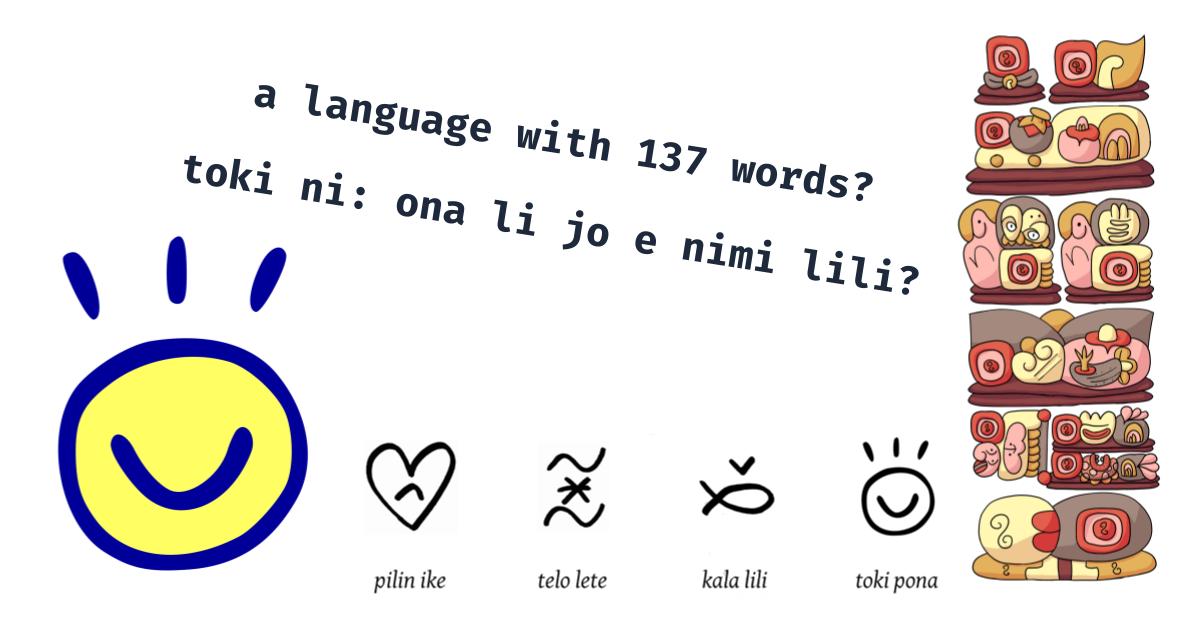Learning toki pona
My experience learning the 137-word language called toki pona.

Recently, I have been learning a language known as toki pona, also known as the language of good. toki pona’s goal is to be a minimalistic language that still allows its speakers to communicate effectively. toki pona is one of the most well-known constructed language, or conlangs for short. It is estimated to have around 300 fluent speakers and over 10,000 people who can effectively read and understand it. My goal is to become one of those people who are fluent in the language. Today we’ll explore my journey in learning toki pona and how you can learn it for yourself.
First Steps
I believed that having a study partner would help me learn toki pona, as I would be able to converse with someone at the end of each lesson and practice my speaking skills that way. Because of that, I asked my friends and family if they wanted to learn the language, and one of my family members agreed to join me.
We began by watching jan Misali’s new course about toki pona, but were dismayed to find that it only had three videos published at the time. We continued by watching their original series, sona pi toki pona. We spoke some toki pona throughout the day and I wrote a lot of it in notebooks.
For me, repeated exposure to toki pona helped me to learn it. I downloaded a sample of “Toki Pona: The Language of Good” by jan Sonja and read it many times. I watched reviews about the language and read countless books and online articles about it. I developed an obsession for the language that was unmatched by anything else in my life. Due to the sheer quantity of material I learned, the language began to sink into my head. I was able to translate complex sentences without needing to think too much. I started to read translations of childhood books presented in toki pona and was able to understand them, albeit a bit slowly.
When I started learning toki pona, I just saw it as an excuse to get a third language under my belt, along with English and Spanish. But as I learned more and more, I began to grasp the philosophy of the language. I saw how to combine words quickly and effectively. I learned that toki pona is more, much more, than its core 137 words. To fully master toki pona, one has to be able to combine words and disassemble a English word such as “television” into its tokiponized version: ilo pi sitelen tawa, or “device of moving pictures.”
The Scripts
As I progressed further into the depths of toki pona, I tried my hand at the sitelen pona and sitelen sitelen scripts. I found them to be much, much easier than I would have believed possible. When I started learning sitelen sitelen, or the hieroglyphic script of toki pona, I thought that the combination of crazy symbols and boxes would be too much for me. I thought I would have to look in the reference guide twenty times just to figure out a sentence. Nope. As I drew more and more of these hieroglyphs, I began to memorize some of them without even trying. I was able to write complex sentences without taking my eyes off of my notebook. I even made a sitelen sitelen drawing for my 14th birthday!
Learning sitelen sitelen gave me new insight into how toki pona’s prepositions work. Previously, I had understood them as special exceptions to the normal rules around li and e, but I began to see them as their own particles with simple behavior after using sitelen sitelen. It also became inspired to learn sitelen pona, the primary script of toki pona (other than its romanized form).
Further Adventures
Learning toki pona has given me a new perspective on how words are used and on language in general. I believe that everyone should learn toki pona, if not for its educational value and creativity, then for its ease of learning and how it can open up new paths in language for everyone. Personally, toki pona has inspired me to learn more languages and explore creating my own.
tawa pona,
sakawi